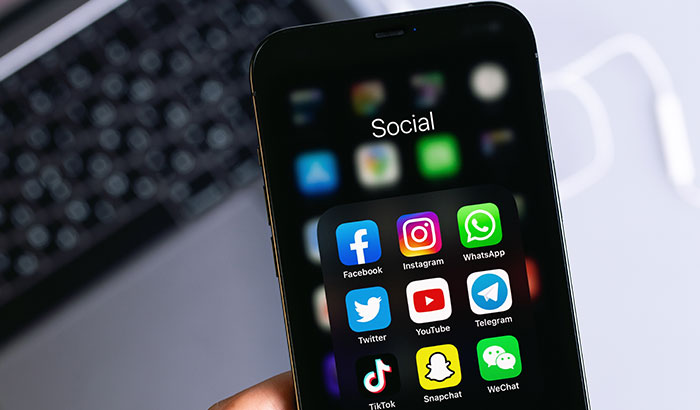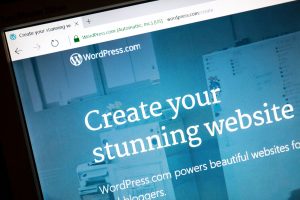Social media has become an essential part of any marketing strategy. With millions of users logging onto social media platforms daily, businesses have a unique opportunity to reach their target audience and promote their products or services. But with so many social media platforms, it can be challenging to determine which platform is the best fit for your business.
In this blog post, we will explore the various factors to consider when choosing a social media platform for advertising, including content type and format, advertising options and costs, and the strengths and weaknesses of each platform.
By understanding these factors, businesses can develop effective social media advertising strategies that help them achieve their marketing goals and reach their target audience more precisely and efficiently.
Social Media Platforms
To determine which social media platform is best for your business, it’s essential to understand what each one has to offer. Let’s look at the most popular social media platforms to do that. We’re focusing on Facebook, Instagram, Twitter, LinkedIn, YouTube, and TikTok.
Facebook is one of the most popular social media platforms in the world, focusing on connecting people with their friends and family. Users can create profiles, add friends, and share photos, videos, and updates about their lives. At one point in time, many would argue it was the best social media platform.
Facebook also offers a variety of communication tools, such as messaging, video calls, and group chats, that allow users to stay in touch with their loved ones no matter where they are in the world.
In addition to its personal use, Facebook has become a valuable tool for businesses and organizations of all sizes. The platform offers a range of advertising options, including targeted ads, sponsored posts, and boosted posts, that can help businesses reach their target audience and promote their products or services.
Facebook also provides analytics tools that allow businesses to track their performance and measure the success of their campaigns.
Creating and joining groups is another feature worthy of mentioning. Groups allow users to connect with others who share their interests, hobbies, or goals. There are groups for everything from cooking and fitness to business networking and support groups for various causes.
This feature makes it easy for users to find and connect with like-minded individuals and can be a powerful tool for building communities and fostering engagement.
Instagram is a popular social media platform initially launched as a photo-sharing app. It has since grown into a versatile platform with a wide range of features that allow users to share photos, videos, and stories with their followers.
Instagram’s key focus is on visual content. Users can share high-quality photos and videos with their followers and use filters and editing tools to enhance their posts. The platform offers a range of creative tools, such as Boomerangs and Reels, that allow users to create engaging and entertaining content. To this day, Instagram is perhaps the best social media platform for quick, visual-centered content.
Instagram also has a strong sense of community, with users able to follow and interact with other users who share similar interests or aesthetics. This has led to the emergence of influencer marketing, where businesses partner with popular Instagram users to promote their products or services to their followers. Influencer marketing has become a valuable tool for companies looking to expand their reach and connect with new audiences.
Hashtags allow users to categorize their posts and make them discoverable to a broader audience. This feature has been widely adopted by businesses and influencers, who use hashtags to reach new followers and promote their brands.
Instagram has also recently introduced shopping features that allow businesses to tag their products in posts and stories, making it easier for users to shop directly from the app. This has made Instagram an even more valuable tool for businesses looking to drive sales and increase their online presence.
Finally, Instagram’s focus on visual storytelling has made it a popular platform for artists, photographers, and creatives. The platform’s emphasis on aesthetics and visual appeal has led to the emergence of new trends and styles and has provided a platform for artists to showcase their work and connect with new fans.
Twitter is a popular social media platform allowing users to share short, concise messages with their followers. Twitter’s brevity sets it apart from other platforms. Tweets are limited to 280 characters, encouraging users to be brief and concise. This has led to a unique communication style where users share quick and straightforward messages that are often witty or thought-provoking.
Twitter is also known for its real-time nature. Users can share and consume information in real-time, making it an important platform for breaking news and live events. This has made Twitter a valuable tool for journalists and news organizations, who use the platform to share news and updates with their followers.
Twitter also uses hashtags, which allows users to reach a wider audience. Businesses and marketers love using hashtags to reach new followers and promote their brands.
Twitter also offers a range of communication tools like direct messages and mentions that allow users to connect and have conversations. This has made Twitter a valuable tool for networking and building relationships.
Finally, Twitter’s emphasis on user-generated content has made it a popular platform for activism and social change. Users can share opinions and discuss important issues, making Twitter a powerful tool for social movements and organizing.
LinkedIn is a social media platform focusing on professional networking and career development. While many social media platforms are for personal use, LinkedIn focuses on jobs and professional development.
Users can create profiles that showcase their work experience, education, and skills and connect with other professionals in their industry. This has made LinkedIn a valuable tool for building relationships, finding job opportunities, and expanding professional networks.
LinkedIn also offers a range of communication tools, such as messaging and groups, that allow users to connect and have conversations.
Another unique feature of LinkedIn is its job search functionality. Users can search for job opportunities based on their industry, location, and experience level and apply directly through the platform. This has made LinkedIn a valuable tool for job seekers and made it easier for recruiters to find and connect with potential candidates.
LinkedIn also offers a range of marketing tools for businesses, such as sponsored content and advertising options. This has increased LinkedIn’s value for businesses looking to reach a professional audience and promote their products or services.
Finally, LinkedIn’s focus on professional development has made it a popular platform for learning and skill-building. The platform offers a range of courses and resources for users to improve their skills and advance their careers.
YouTube
YouTube is a video-sharing social media platform that has become the world’s largest and most important tool for personal expression, entertainment, and marketing for businesses.
One of the key features that sets YouTube apart from other platforms is its focus on video content. Users can share and consume a wide range of video content, including music videos, movie trailers, vlogs, tutorials, and more. This has made YouTube a valuable tool for personal expression, entertainment, and education.
YouTube has a range of creative tools, such as editing tools and music libraries, that allow users to create engaging and high-quality video content. This has made YouTube a valuable tool for content creators who use the platform to build their audience and monetize their content.
Another unique feature of YouTube is the use of channels. Users can create channels that showcase their video content and build a following of subscribers. This has made YouTube a valuable tool for businesses and marketers who use channels to reach new audiences and promote their brands.
YouTube also offers content creators a range of monetization options, such as advertising revenue, sponsorships, and merchandise sales. This has made YouTube a valuable tool for individuals looking to build a career in video content creation.
Finally, YouTube’s focus on community has made it a popular platform for interaction and engagement. Users can leave comments on videos, share videos with their friends, and connect with other users who share similar interests. This has made YouTube a powerful tool for building communities and fostering engagement around video content.
TikTok
TikTok is a video-sharing social media platform allowing users to create and share short-form videos, usually set to music or audio. TikTok has become an important tool for personal expression, entertainment, and business marketing.
TikTok’s emphasis is on short-form video content. Videos on TikTok are limited to 15 or 60 seconds, encouraging users to be creative and concise in their content. This has led to the emergence of a unique style of video content, where users share quick and engaging videos that are often humorous or visually stunning.
TikTok is also known for its algorithm, which uses machine learning to personalize the content that users see on their For You page. This has made TikTok a valuable tool for content discovery, as users are exposed to a wide range of content tailored to their interests.
Another unique feature of TikTok is its use of music and other audio. Users can add music and sound effects to their videos, which has made TikTok a popular platform for music discovery and sharing. This has also made it a valuable tool for musicians and artists looking to promote their music and connect with new fans.
Finally, TikTok’s focus on community has made it a popular platform for interaction and engagement. Users can leave comments on videos, share videos with their friends, and connect with other users who share similar interests. This has made TikTok a powerful tool for building communities and fostering engagement around video content.
Factors to Consider When Choosing a Social Media Platform
When it comes to social media marketing, choosing the right platform can be the difference between success and failure. Each platform has unique features, demographics, and content types, making it important to consider your options carefully before committing to a particular platform.
In this section, we’ll explore some key factors to consider when choosing a social media platform for your business. Let us help you decide which platform(s) are right for your brand.
Audience Demographics
Audience demographics play a crucial role when choosing a social media platform for digital marketing. Different social media platforms attract different audiences, and understanding these demographics can help businesses choose the right platform to reach their desired audience.
For example, Facebook has a wide range of age groups, with the largest demographic being users in their mid-twenties to mid-thirties. On the other hand, Instagram has a younger audience, with the largest demographic being users in their late teens and early twenties. LinkedIn, as a professional networking platform, attracts an older and more career-focused audience, with the largest demographic being users who are middle-aged.
Other demographic factors include gender, education level, income, and location. For example, Pinterest has a majority female audience, while Twitter has a slightly higher percentage of male users.
Understanding audience demographics is important because it allows businesses to tailor their marketing strategies to their target audience. For example, a business targeting a younger audience may focus on Instagram, while a business targeting a more professional demographic may focus on LinkedIn.

User Behavior and Habits
User behavior and habits are important factors to consider when choosing a social media platform for advertising. Different social media platforms have distinct user behaviors and habits, and understanding these can help businesses create effective advertising strategies that resonate with their target audience.
For example, Facebook users use the platform to connect with friends and family, share personal updates, and consume news and entertainment. This makes Facebook a valuable platform for businesses looking to build customer relationships and create a sense of community around their brand.
On the other hand, Instagram users use the platform to discover and share visually stunning content, such as photos and videos. This makes Instagram a valuable platform for businesses with visually appealing products or services, such as fashion or beauty brands.
LinkedIn users tend to use the platform as a professional networking platform to connect with colleagues, build their professional network, and consume industry-related news and information. This makes LinkedIn a valuable platform for B2B businesses looking to reach a professional audience and establish themselves as thought leaders.
Another critical factor is the frequency with which users interact with the platform. For example, Twitter users tend to be highly engaged and active, with many users checking the platform multiple times per day. This makes Twitter a valuable platform for businesses looking to promote time-sensitive offers or engage in real-time conversations with their audience.
Understanding user behavior and habits can help businesses create more effective advertising content. For example, companies advertising on Instagram may choose to create visually stunning ads that showcase their products or services in an engaging way. On the other hand, businesses advertising on LinkedIn may decide to create informative and data-driven ads that appeal to a professional audience.
Business Goals and Objectives
Business goals and objectives matter when choosing a social media platform for advertising. Different social media platforms have different strengths and features that can help businesses achieve their specific marketing goals.
For example, businesses looking to increase brand awareness may choose to advertise on Facebook or Instagram, as these platforms have large user bases and strong advertising capabilities. Facebook and Instagram also offer advanced targeting options, such as interest targeting and lookalike targeting, which can help businesses reach specific audiences and increase brand awareness.
On the other hand, businesses looking to drive website traffic or generate leads may advertise on LinkedIn, as the platform has a more professional audience and offers a range of advertising options tailored to B2B businesses.
LinkedIn also offers advanced targeting options, such as job title and company targeting, which can help businesses reach decision-makers and generate high-quality leads.
Another important factor to consider is the type of content that performs well on each platform. For example, visual content like photos and videos performs well on Instagram, while informative and data-driven content performs well on LinkedIn.
Businesses should also consider the specific goals of their advertising campaign when choosing a social media platform. If the goal is to increase sales or drive conversions, businesses may choose to advertise on platforms that offer advanced tracking and measurement capabilities, such as Facebook or Google Ads.
Budget is another thing to consider. Different platforms have different costs and requirements for creating and managing ad campaigns, and businesses should choose the platform that best aligns with their budget and resources.
Content Type and Format
Different social media platforms have different content formats that perform well and resonate with their audience. Understanding these formats can help businesses create effective advertising strategies tailored to each platform.
For example, Instagram is a highly visual platform ideal for businesses with visually appealing products or services. Ads on Instagram perform well when they feature high-quality images or videos that showcase the product or service in an engaging way.
On the other hand, LinkedIn is a more professional platform ideal for B2B businesses. Ads on LinkedIn tend to perform well when they feature informative and data-driven content that speaks to a professional audience.
Length and format are also essential factors. For example, Twitter is a platform ideal for short-form content like tweets or threads. Ads on Twitter perform well when they are concise and to the point with a clear call to action. Facebook, on the other hand, allows for longer-form content, such as posts or videos, that you can use to provide more in-depth information about a product or service.
Businesses should also consider the specific goals of their advertising campaign when choosing a social media platform. For example, suppose the goal is to increase engagement or drive social media followers. In that case, businesses may advertise on platforms offering social media-specific features, such as Instagram or TikTok.
Budget and resources also matter. Different platforms have different costs and requirements for creating and managing ad campaigns, and businesses should choose the platform that best aligns with their budget and resources.
Advertising Options and Costs
Advertising options and costs are important factors to consider when choosing a social media platform for your business. Most social media platforms offer a range of advertising options, including sponsored posts, display ads, and video ads.
Each option has its strengths and weaknesses, and the cost of advertising can vary widely depending on the platform and the ad type. Some platforms, like Facebook and Instagram, offer highly targeted advertising options that allow you to reach a specific audience based on demographics, interests, and behaviors.
Other platforms, like Twitter and LinkedIn, may offer fewer targeting options but can be more cost-effective for certain businesses. It’s important to carefully consider your advertising goals and budget when choosing a platform and ad type to ensure you get the most bang for your buck.
Analytics and Measurement Tools
Analytics and measurement tools are essential for tracking the success of your social media marketing efforts. Most social media platforms provide some level of analytics and reporting, allowing you to track metrics like engagement, reach, and follower growth.
However, there are also third-party tools available that can provide more detailed insights into your social media performance. These tools can help you track metrics like website traffic, lead generation, and sales, allowing you to measure the ROI of your social media marketing efforts.
With the right analytics and measurement tools, you can identify what’s working and not, make data-driven decisions about your social media strategy, and continually optimize your campaigns for better results.
What is the Best Social Media Platform? There Isn’t One
When it comes to social media advertising, there is no one “best” platform. Each platform has its unique strengths and weaknesses, and the best social media platform for your business will depend on your specific marketing goals, target audience, and budget.
If you want to increase brand awareness and engagement with a younger audience, consider TikTok. On the other hand, if your goal is to generate high-quality leads for a B2B business, LinkedIn may be the best platform for you.
It’s important to evaluate the pros and cons of each platform and choose the one that aligns best with your specific needs and goals. By doing so, you can create an effective social media advertising strategy that helps you reach your target audience and achieve your desired outcomes.
Advertise on Social Media With REVITY Marketing Agency
If you need help determining which social media platform is the best fit for your business, feel free to reach out to the experts at Revity Marketing Agency.
Our team of experienced marketers can help you navigate the complexities of social media advertising and develop a customized strategy that aligns with your specific marketing goals and target audience.
With our guidance, you can make informed decisions about which platform to use and how to maximize your advertising budget for optimal results. Contact us today to learn more about how we can help you elevate your social media advertising game and take your business to the next level.

































